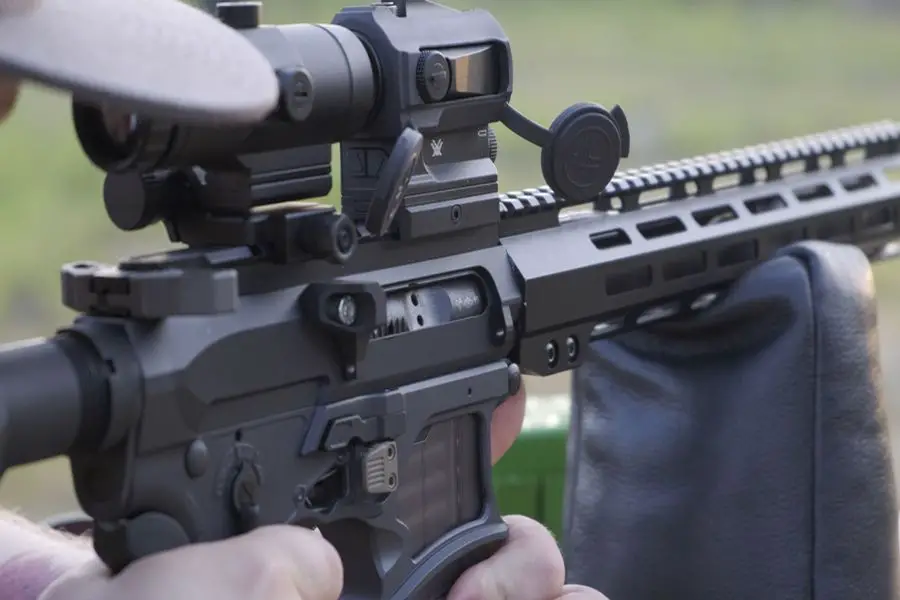As an Amazon Associate we earn from qualifying purchases.
Whether you took your firearm apart for inspection, cleaning, repair, or upgrade, there is a chance that one of the components won’t fit back in again. If you’re wondering, “why won’t my charging handle go back in?” I’m here to help.
Old and new charging handles may not fit a firearm for a couple of reasons. I’ve discussed the issues and their fixes below.
Contents
Why Won’t My Charging Handle Go Back In?
Your charging handle isn’t going back into the firearm because these components must be inserted into the upper appropriately before the bolt can go back into the firearm. Find the tabs on the handle’s “rod,” angle the rod into the slot from below, and check if the handle goes forward into the upper without the bolt.
Next, check whether the bolt is pulled forward and the cam pin is directly below the gas key. Draw the handle back about halfway and slip the carrier key into the handle. You should now be able to slide the bolt into the upper without hassle.

How Common Is the Issue of Charging Handle Not Going Back In?
You’d be surprised knowing how many young marines run into this issue. There have been several instances (many documented on the internet) of marines in training being unable to work with the charging handle. Many believed that they broke the handle somehow and needed to change it to a new one.
It’s often only a matter of learning the right technique of sliding the charging handle into the upper. But that’s not to say compatibility issues never occur.
If a Charging Handle Does Not Ride in an AR, Is It Out of Spec?
Sometimes, even if a charging handle is built for a specific caliber and firearm, it won’t fit into the weapon. This typically happens when gun owners try to fit low-quality charging handles into their weapons. This issue is referred to as “tolerance stacking.”
Tolerance Stacking
Tolerance stacking is typically used in engineering and systems design, but it is also relevant to gun owners. The term refers to a system’s overall reliability based on the combined deviations of its components.
Think about it:
- There are components A and B, and they’re meant to fit together.
- The specs for component A reveal that it has to be a specific size, +/- some amount.
- The same goes for component B.
Tolerance stacking happens when component A is “within spec” but on the larger side, and component B is on the smaller side. Together, these components cannot work together.
How Tolerance Stacking Relates to Charging Handle Issues
Low-quality or old charging handles may morph into a shape that makes them incompatible with the weapons they’re supposed to be compatible with. This is why gun owners are recommended to buy components from well-known brands.
Conclusion
Putting a charging handle back into the upper is as simple as aligning the tabs on the handle’s rods and sliding it in. You can then check whether the cam pin is below the gas key, pull the handle back, and slide the carrier key into the handle before putting the bolt back into the upper.
If this doesn’t work and you’re using a component you haven’t used before, it’s likely tolerance stacking that’s causing the issue.
